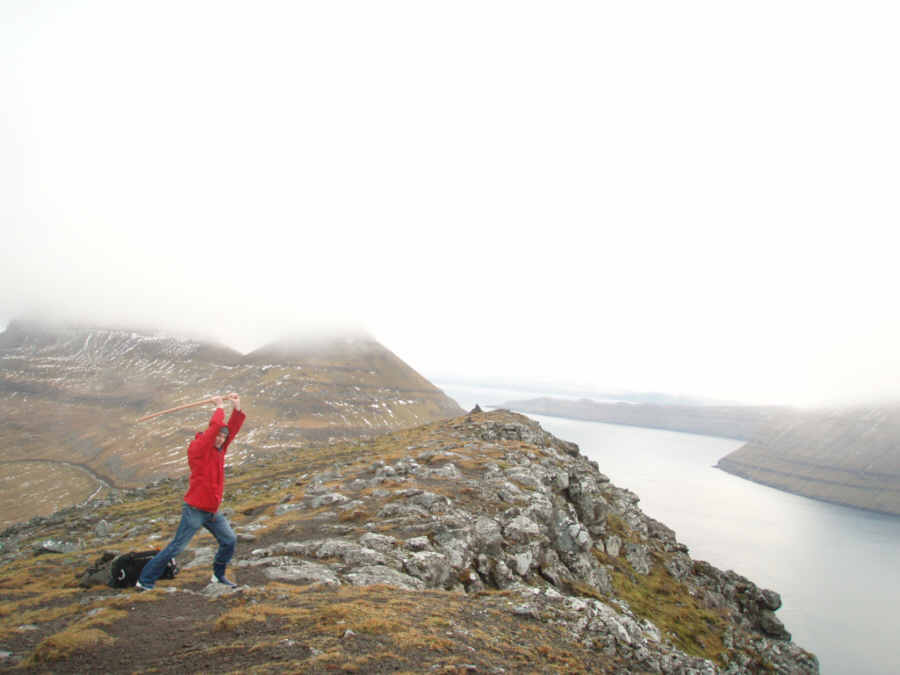
By Christian H. Olesen, Member until 2022
Already when Kjeld Renshi-dai told me that there would be a Ken course and that I would have the opportunity to participate, I felt very privileged that as a 7th kyu (ed. 1-1½ years of training) I was already allowed to gain insight into Japanese sword art. I prepared by spending an afternoon learning about Japanese wooden swords from a man I had been recommended by Kjeld Renshi-dai.
After learning to hold the sword with the right hand at the top and doing a simple 'mako' technique, I was given the opportunity to try different wooden swords. From the feeling of holding a Japanese white-oak 'bokuto' that I hope to one day earn, I narrowed the choice down to three good 'beginner' swords. Weight, balance and grip were vastly different. The sword that fit best in my hand turned out to be a Japanese red-oak 'bokuto', the last one in the shop, so I was even offered the sword at a good price. This is now my first 'bokuto'.
Since that day, I looked forward more and more to learning how to use my 'bokuto'.
From the film 'The Seven Samurai', and other films by Akira Kurosawa, I had an idea of 'Ken-do', i.e. the Way of the Sword. What a privilege to be shown the way by a true grandmaster, namely Kimu Sensei himself. At a well-planned and well-executed Ken-jutsu course, the 'selected few' were shown Japanese sword art.
On the first day of the course, we practiced three fighting stances ('jodan no kamae', 'chudan no kamae' and 'gedan no kamae'), one handling ('mawashi-tachi'), and six techniques ('mako' and ' tsuki'), both for 'chudan', 'gedan' and 'jodan'. Kimu Sensei told us that it was important that we practice what we had learned before the second half of the course. I found a good place to practice my basic techniques, including the 'tikiri' sword arm, namely on a desolate mountain top in the northern part of the Faroe Islands; see picture.
On the second day of the course, we rehearsed what we had already learned and learned a new fighting position, namely the water dart position; 'waki no kamai', and twelve techniques, ('kesa', 'gyaku kesa', 'omoto kesa' and 'ura kesa'), the last two performed from 'waki no kamae' and all four to 'chudan', ' gedan' and 'jodan'.
We learned that the tip of the sword ('kissaki') points towards the opponent's: left eye in 'chudan' 'no kamae/tsuki', neck in 'jodan' 'no kamae/tsuki', and the opponent's imaginary center point between the legs in 'gedan' 'no kamae/tsuki'.
'Kesa' technique cuts from shoulder to stomach in 'jodan', stomach to hip in 'chudan', and hip to thigh in 'gedan'.
We learned that the sword-hilt ('kashira') and parér-plate ('tsuba') in the uprights end above the head at the center point, and the sword-point and -hilt describe two semi-circular arcs; not fishing rod throwing or ax chopping.
We learned that 'mawashi tashi' is also used as a parade and that the strongest part of the sword is the edge of the blade, with the outermost 10 cm being the sharpest part that is used to cut with. The outermost part of the tip is traditionally triangular to facilitate penetration and withdrawal when perforating e.g. an attacker's stomach.
A refresher course was given at the X-MAS camp, with further training in etiquette, as well as repetition of the fighting positions, handling and techniques demonstrated on the course. Afterwards, a test was held during the actual graduation with the aim of obtaining final approval of Ken course package 1.
I am grateful to have learned the four basic fighting stances, right and left handling, and the eighteen basic techniques. As apprentices of the Samurai, it is our duty to train what is learned.
The road to Ken-Jutsu, i.e. to the Art of the Sword, comes with training – daily training over many years. I sensed or learned that when I faced my Jokokan 'kon-colleague' and we fought 'Kumite' with three steps back and forth. According to Kimu Sensei's instruction, I focused on technique, precision and power – in that order. I think it went well and 'won' or 'survived' several battles, perhaps due to my inherited quick reaction ability I thought. At least right up until I suddenly sensed Jens Kyoshi (ed. all black belts from 1-6.dan also participated in kenjutsu course package 1, although some have already trained in Yakami-ryu Ken- and Iai- jutsu of different level).
From Kimu Sensei counting "ichi" until I was in ready position or close, Jens Kyoshi (ed. 5th dan Sr.) had performed his entire technique, including 'chiburi', and was even calmly on his way in 'chudan no kamae ' ready stance, again ready to defend, attack or cross blades with his imaginary opponent(s). These movements were performed with such technique, precision, speed and power that the movement was on the spinal cord. Right at that second, I was glad that I didn't live in old Japan and, for example, had inadvertently bumped into a real samurai (also in the original meaning 'one who serves') like Kimu Sensei, Jens Kyoshi, Renshi-dais, Shíshús and Shidoins or not had shown due respect to any true master of Ken Jutsu. Practice makes perfect.
どうもりまする (Thank you very much) for an outstanding Kenjutsu course for Kimu Sensei, Jokokan and and Jokokans.






